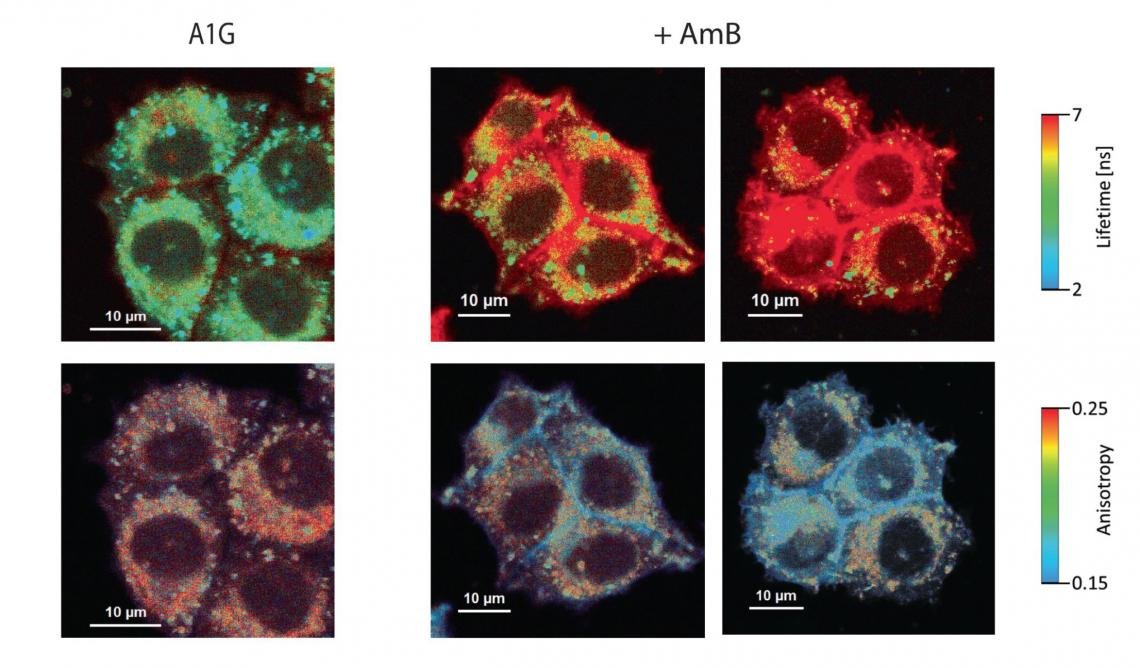
ABCA1 transporter reduces amphotericin B cytotoxicity in mammalian cells
A. Wu, E. Grela, K. Wójtowicz, N. Filipczak, Y. Hamon, R. Luchowski, W. Grudziński, O. Raducka Jaszul, M. Gagoś, A. Szczepaniak, G. Chimini, W. I. Gruszecki, T. Trombik
Amphotericin B (AmB) belongs to a group of polyene antibiotics commonly used in the treatment of systemic mycotic infections. A widely accepted mechanism of action of AmB is based on the formation of an oligomeric pore structure within the plasma membrane (PM) by interaction with membrane sterols. Although AmB binds preferentially to ergosterol, it can also bind to cholesterol in the mammalian PM and cause severe cellular toxicity. The lipid content and its lateral organization at the cell PM appear to be significant for AmB binding. Several ATP-binding cassette (ABC) transporters, including ABCA1, play a crucial role in lipid translocation, cholesterol redistribution and efflux. Here, we demonstrate that cells expressing ABCA1 are more resistant to AmB treatment, while cells lacking ABCA1 expression or expressing non-active ABCA1MM mutant display increased sensitivity. Further, a FLIM analysis of AmB-treated cells reveals a fraction of the antibiotic molecules, characterized by relatively high fluorescence lifetimes (> 6 ns), involved in formation of bulk cholesterol–AmB structures at the surface of ABCA1-expressing cells. Finally, lowering the cellular cholesterol content abolishes resistance of ABCA1-expressing cells to AmB. Therefore, we propose that ABCA1-mediated cholesterol efflux from cells induces formation of bulk cholesterol–AmB structures at the cell surface, preventing AmB cytotoxicity.
